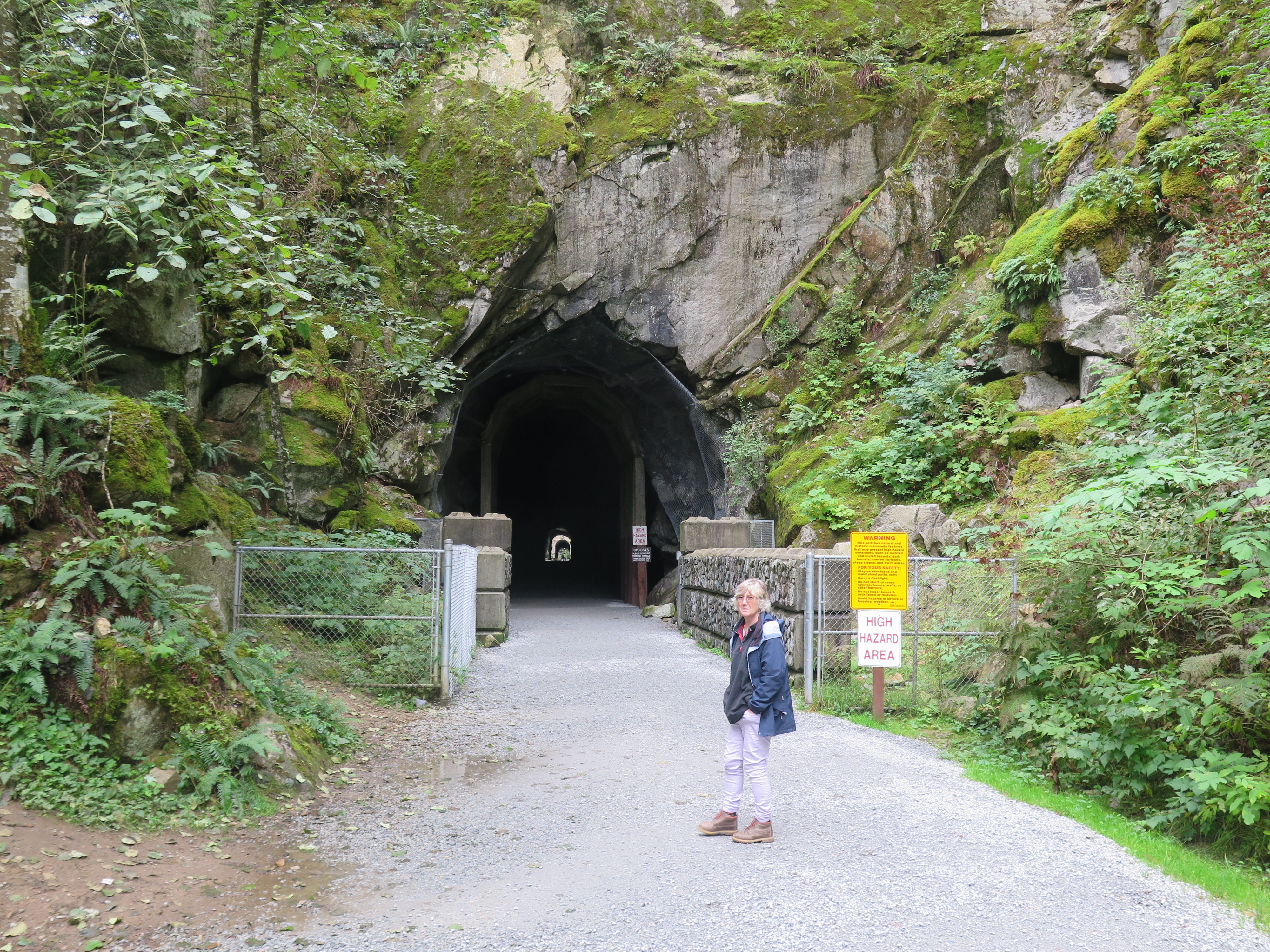Mainly a driving day today. We set off around 9am and headed back on the Crows Nest Highway. After a stop at Deadwood Junction (a very nice cafe) in Greenwood for a coffee and butter tart (!) we carried on via Keremeos to Princeton for lunch. After lunch we headed to the B&B we booked in Hope arriving about 4pm. The host was really welcoming and gave us the full low down on Hope. He particularly recommended going for a walk through the Othello Tunnels – otherwise known as Coquihalla Canyon Provincial Park.
We duly did as suggested, thinking it would be a nice way to unwind after a day’s driving. It massively exceeded our low expectations. The tunnels were part of the Kettle Valley Railway (KVR). This was completed in 1916 and transformed communications between Vancouver and Kootenay. A trip from Vancouver to Nelson would previously have taken around 10 days on horseback and mule road, but it now took just 10 hours. The main motivation was perhaps to be able to move the mineral wealth (gold, silver, lead and zinc) of West Kootenay straight to the port at Vancouver, but the line boosted economic activity in various other ways as well. Timber, cattle and Okanagan fruit were all moved by rail. Towns sprung up along the line to service the railway and the telegraph line which went along the side of the railway was the internet of its day!
The railway was not cheap to build. The average cost was $136,000 per mile, but the most expensive mile though Coquihalla Canyon cost over $300,000. The line was abandoned in portions beginning in 1961, with the surviving portion west of Penticton seeing their last trains in 1989. it is now part of the Kettle Valley Trail and we walked the short section through the Othello Tunnels.

The gorge where the tunnels run through is amazing. However, to get a railway line through it was challenging to say the least. The surveyor, Andrew McCulloch, was reputedly hung down from the top of the gorge in a woven basket to measure where the tunnels would need to go. He calculated that several miles could be saved by creating five tunnels and two bridges through the gorge and this was the route that was chosen.

The tunnels were eventually called the quinette tunnels, though actually there are only four. However, they became known as the Othello tunnels as Andrew McCulloch was a great lover of Shakespeare’s works and apparently carried them everywhere. He therefore argued for all the stations in the Coquihalla subdivision to be named after Shakespeare characters. the tunnels are close to Othello station. Other station names included Iago, Romeo, Juliet, Portia and Lear.

